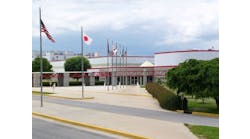This MTD exclusive was provided by John Healy, managing director and research analyst with Northcoast Research Holdings LLC and author of MTD's monthly Your Marketplace column.
Recent dealer commentary suggests that consumer demand for passenger and light truck tires continues to drop. Demand fell on a net basis this past June versus the same month in 2021.
Twenty-nine percent fewer respondents to our most recent survey said they observed positive year-over-year demand in June, which follows trends reported by dealers in both May and April.
In previous months, we had indicated that we believed delayed tax refunds may have contributed to these declines. But with refunds now largely behind us, there has been no pickup in demand.
We also note that tire manufacturer price increases and inflationary pressures in the broader economy worked to dampen consumer spending.
Dealers also tell us that recent price hikes are becoming less sticky and inventory levels are improving. This poses further risk to consumer tire sellout trends.
While we continue to maintain our belief that long-term volumes will become more closely aligned with current levels of GDP growth, we also will be closely watching Federal Reserve actions as interest rate hikes pose an additional risk to economic expansion and could drive a short-term contraction in GDP growth.
No growth in any region
We continue to track geographic regions that show positive growth and note that during the month of June, no region reported sellout increases. The Mid Atlantic region showed the strongest performance, but was flat compared to the same period in 2021. The Northwest region performed the worst on a year-over-year basis.
Dealers once again indicate that overall inflationary impacts on consumers — as well as pricing actions from tire manufacturers — are driving the declines in both demand and retail sellout.
The return of tier-two
In response to our question about the “best and worst performers” from a product mix point of view, our recent survey of tire dealers reveals that tier-two tires were the most in-demand among consumers during June. This follows a rare, three-way tie in May — when tier-one, tier-two and tier-three brands had reached a moment of parity.
We also note that tier-two tires were the most in-demand of all three tiers during 2021 — 10 out of 12 months, specifically.
Given continued pricing actions from manufacturers and an overall decline in consumers’ discretionary income, we were not surprised to see tier-one demand decline during the month of June.
It remains true that consumers change their brand and tier preferences based on the volatile economic situation. Over the long run, we believe consumers will gravitate towards tier-two tires as they try to strike a balance between value and performance. Retail sellout continues to decline
Raws are on the rise
The price of tires isn’t the only thing that continues to increase. The basket of raw materials needed to build a common replacement consumer tire rose 35% on a year-over-year basis this past June, while also increasing by 2.6% since May 2022. This continues the trend of rising raw material inputs on a year-over-year basis, which started at the beginning of 2022.
Looking back on the second quarter of the year, we note there was a 33.7% year-over-year increase in general input costs, plus a 6.7% sequential increase from the first quarter of 2022.
Holding current spot prices flat would yield a 32.9% year-over-year increase next quarter, which would represent a 2.7% sequential increase from the second quarter.
In examining raw material price movements in specific categories, we note the carbon black has seen its price increase on a year-over-year basis for the past 18 months. In June 2022 alone, carbon black experienced a 55.8% year-over-year jump in price.
Looking at crude oil, 2021 saw massive price increases, which have carried over into 2022 due to geopolitical factors and inflation. We note that June saw a 60.9% year-over-year increase, while posting a sequential gain of nearly 5% from May.
Natural rubber prices grew 3% in June 2022 — on top of elevated prices in the prior month. The price of synthetic rubber grew 16.3% on a year-over-year basis, while climbing 2.4% from May 2022.
Lastly, the price of various tire reinforcement items continued to increase, jumping 39.2% on a year-over-year basis in June — a strong increase similar to what was observed the previous month.




